This was published 4 years ago
South Africa safari, Cederberg region: A land of brutal beauty and surprising wildlife
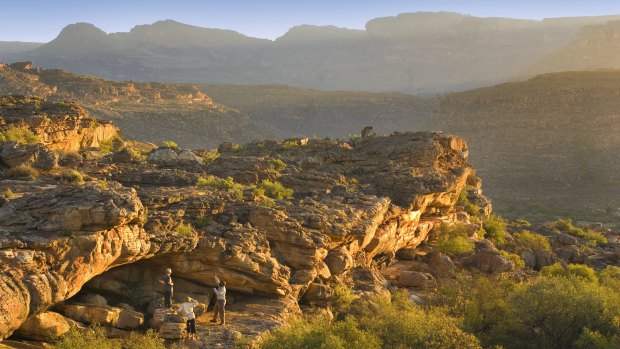
Rugged beauty: South Africa's Cederberg region.Credit: The Red Carnation Hotel Collection
There's a rugged, almost brutal beauty to South Africa's Cederberg region. Stretching across 70,000 hectares and about two hours' drive from Cape Town, it's in parts flat and scrubby, then punctuated by magnificent rocky outcrops, and then towering mountains.
Characterised by what appears to be an unforgiving landscape, it nonetheless sustains an incredible array of plant and wildlife and encompasses part of the World Heritage-listed Cape Floral region, added to UNESCO's list 15 years ago to protect the 9600-odd species of fauna unique to the area. One of six "floral kingdoms" in the world, it is notable for the fynbos vegetation, a Mediterranean-type, fire-prone shrubland. South Africa has the third highest biodiversity in the world, thanks in large part to this region.
Sunset is a sight to behold, the sky a swirl of luminescent colour, and dawn unveils a similarly brilliant spectacle. Stunningly beautiful, it is also devastatingly poor. Although one of the richest of African nations, of its population of 57 million, about one quarter are unemployed and live on less than $US1.25 a day. The disparity in wealth is apparent everywhere throughout this remarkable, intoxicating yet still troubled country.
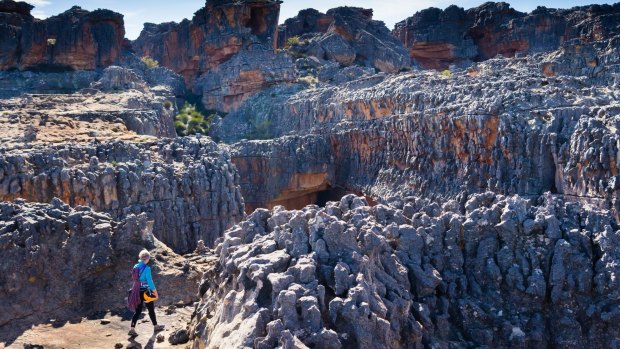
A climber walking off the top of Wolfberg in the Cederberg of South Africa.Credit: Shutterstock
While much talk about game parks in Africa centres on the big five – elephants, rhinos, buffalo, lions and leopards – here the focus is on the smaller variety. Dusk is the ideal spotting time, and provides the chance to see aardwolf, African wildcat, bat-eared fox, Cape fox and porcupine in all their glory. There are also baboons, dassies (a type of rock badger), several kinds of deer or antelope – eland, grey rhebok, klipspringers, duiker, grysbok – small grey mongoose and striped polecat.
The particularly eagle-eyed might be rewarded with a glimpse of the honey badger, Cape clawless otter and the aardvark, although they are seldom seen.
One can only imagine a time when these lands were once widely roamed by the Cape lion or the quagga, a cousin of the zebra. Harsh lessons have been learnt as a result of the rampant development of huge tracts of land since the European settlement of South Africa. The indigenous Cederberg trees, found only in the Cederberg mountains and for which the region is named, are endangered but concerted efforts to rehabilitate and nurture them have been made, resulting in increased numbers and a brighter outlook.
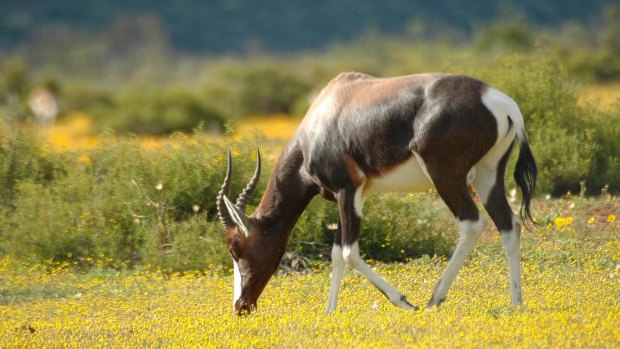
The bontebok at Bushmans Kloof Wilderness.Credit: The Red Carnation Hotel Collection
Similarly, the Cape leopard is the focus of an extensive conservation program. Much smaller than those found elsewhere in Africa, the Cape leopard is also more vulnerable. The Cape Leopard Trust studies and protects this exquisite creature, which is rarely sighted.
Birds are plentiful, with more than 100 species calling this patch of earth home: black eagle, rock kestrel and jackal buzzard are the most common raptors. Southern masked weavers are particularly resourceful, weaving their nests in the top of reeds along the edges of lakes so that when predatory snakes slide over them they and their nests submerge and escape to live another day.
Beyond the natural attractions are wonders of a different kind. Rock art in this region is remarkable, and dates back to between 8000 and 10,000 years ago, relatively recent works compared with some in other parts of South Africa that go back as far as 28,000 years.
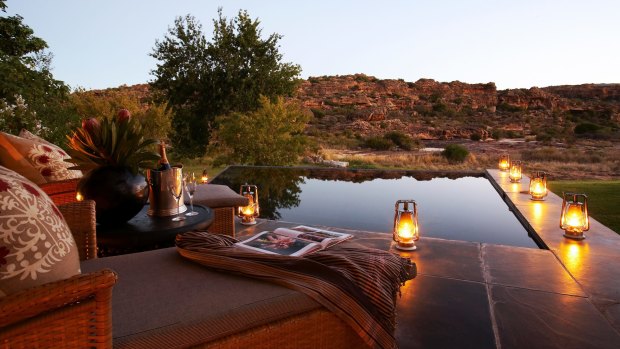
Supreme Suite at Bushmans Kloof.
Remarkably well-preserved, the images depict animals, including the eland and the elephant, documenting the fact that elephants once traversed these parts. Humans are often shown hunting or gathering food, while other pictures show half-animal, half-human figures; all are assumed to have significant religious meaning.
According to cartographer and rock art specialist, Peter Slingsby, southern Africa probably has the richest legacy of rock art in the world. "The Western Cape, particularly the mountainous regions from the Koue Bokkeveld, through the Cederberg to the Agter Pakhuis, may have more rock painting per square kilometre than anywhere else in Southern Africa."
Wildflowers in bloom are spectacular, appearing in spring, between July and October, creating a kaleidoscope of colour. Some provided sustenance for the original habitants and one in particular is feted to this day.
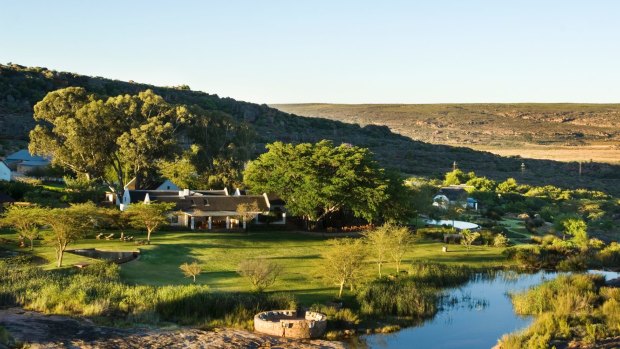
Bushmans Kloof Wilderness Reserve.
The famous South African tea rooibos is indigenous to the Cederberg region and not found anywhere else in the world. Part of the fynbos biome, it is caffeine-free and high in antioxidants. Widely used by the San and the Khoi people as a herbal remedy for different ailments, to this day many South Africans give it to children when they have a cold. The name means red bush in Afrikaans and it can be drunk hot or cold, with or without milk.
In the north of Cederberg in Clanwilliam, the rooibos factory is open to the public, offering devotees an insight into the history of the tea as well as the production process. Tours of the plantation and drying yards are also open to the public.
The lesser known buchu is also considered something of a natural wonder, most often used as a tea and as an anti-inflammatory. Part of the citrus family, it was exported to Britain in the 18th century. Back then in Europe it was known as the "nobles" tea as only the wealthy could afford it. Legend has it that there were eight bales of buchu on board the Titanic.
Whether you're into hiking, mountain-biking, camping, rock climbing or more sedentary pursuits such as star-gazing and four-wheel driving, it's an area rich for exploration.
Such a vast, undeveloped wilderness is a thing of absolute beauty in this often frenetic, modern age. Standing here looking across the plains, it feels like nothing has changed since the San first drew on those cave walls thousands of years ago.
It's the sort of place that inspires wonder at the magnificence of nature and creation, along with thoughts about time and humanity and our place in the universe.
TRIP NOTES
Kerrie O'Brien travelled a guest of Emirates.
MORE
FLY
Emirates has three daily flights to Dubai from Sydney and Melbourne. Australian passengers can connect to Emirates' two daily Cape Town services via Dubai. See emirates.com/
STAY
A luxury room at Bushmans Kloof is ZAR 7590 a night during low season (May 1-August 31). In the high season (January 6-April 30 and September 1-December 19) luxury room rates are ZAR13,190 a night. There are a range of rooms, suites and private villas available. See bushmanskloof.co.za
Sign up for the Traveller Deals newsletter
Get exclusive travel deals delivered straight to your inbox. Sign up now.